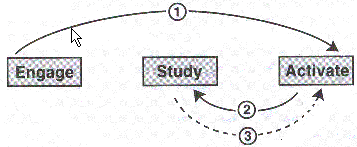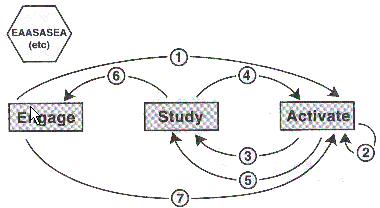

A. What is involved in lesson planning?
1. How to divide a unit into lessons?
2. What are the objectives of each lesson?
3. What teaching and learning activities are most effective for
achieving the objectives?
4. What language and non-language materials are needed to carry
out the activities and achieve the objectives?
5. When should an activity be carried out and for how long?
6. Writing a lesson plan.
B. General Guidelines
1. The objectives should be clearly specified according to
the needs of the students and the goals and objectives set in
the syllabus and textbook.
2. The activities and materials should be selected and ordered
in a way consistent with sound pedagogical principles and the
objectives of the lesson.
| Materials | Activities |
|
a. language should be comprehensible b. provide sufficient input and examples c. use authentic language as much as possible d. vary topics and text types e. incorporate cultural information f. use audiovisual aids and technology where appropriate |
a. each activity has a purpose b. give clear instructions so that Ss know what to do c. involve all students in the activities as much as possible d. vary activities (e.g., form vs. meaning focused; accuracy vs. fluency; whole class vs. small group) e. create a relaxed and entertaining atmosphere f. provide feedback and check progress |
C. Models of Lesson Planning
1. The PPP Model -- Presentation, Practice, and Production (Van Els et al., 1984). Applied Linguistics and the Learning and Teaching of Foreign Languages)
2. The OHE Cycle -- Observe, Hypothesize, Experiment (Lewis,1991). The Lexical Approach)
3. The ITB Model -- Into, Through and Beyond (Brinton and Holten, 1997). "Intro, Through and Beyond" English Teaching Forum)
4. The ESA Model -- Engage, Study, Activate (Harmer, 1998). How to Teach English)
Sequence Variations of the ESA Model (from Harmer, 1998)

ESA Straight Acrrows sequence

EAS(A) Boomerang sequence

EAASASEA (etc.) Patchwork sequence
5. The PPPA Model -- Preparation, Presentation, Practice, and Application (the model to be used in this class)
D. Writing A Lesson Plan (adapted from Purgason, 1991)
|
1. About the students |
||||||
|
|
||||||
|
(Review and Warm-up) |
||||||
| Activity |
Interaction Pattern |
Objectives | Aids and Materials | Language | Problem | Time |
| free conversation, | T-S | review | none | oral | 5' | |
|
|
||||||
|
|
||||||
|
|
||||||
|
(Evaluation, Summary and Homework) |
||||||